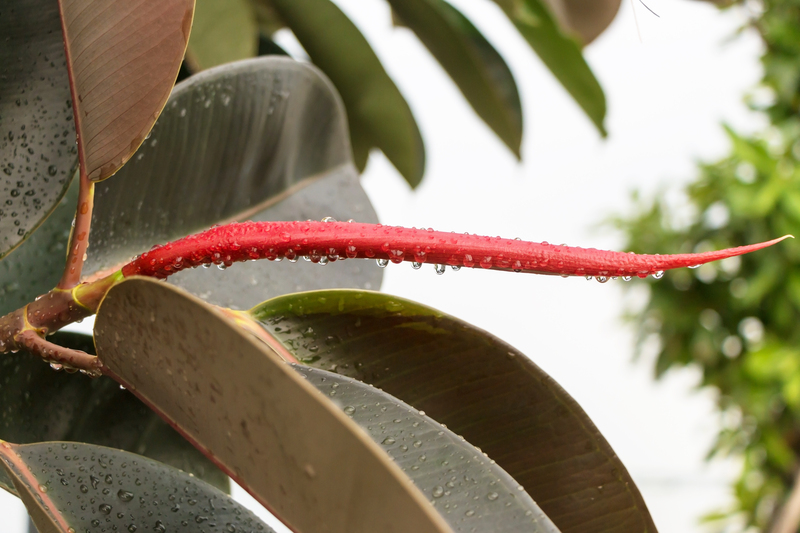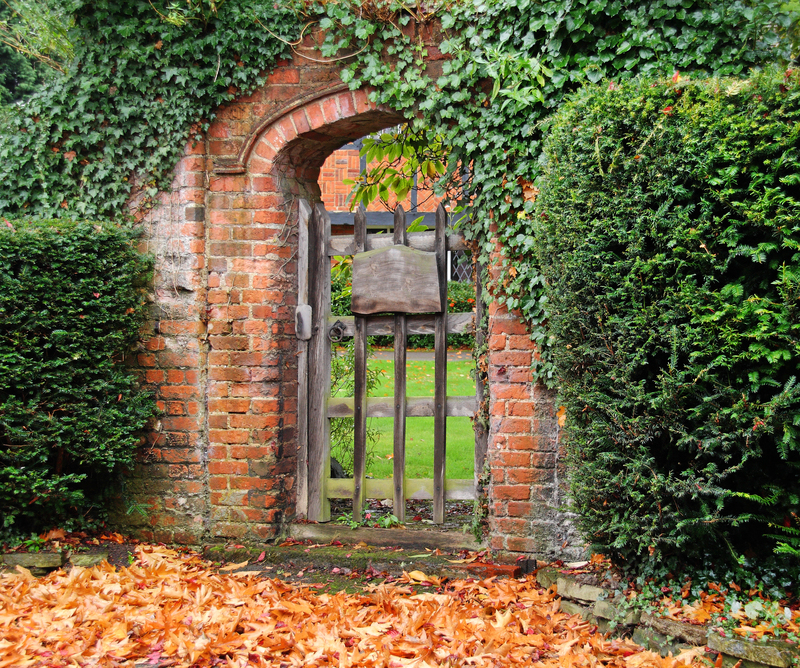Discovering Winter Gardening: Essential Steps to Shield Your Plants
Posted on 31/05/2025
Discovering Winter Gardening: Essential Steps to Shield Your Plants
As the chill of winter approaches, avid gardeners face a daunting challenge: how to protect plants during winter. While winter gardening might seem impossible to some, smart strategies and proper care can ensure your green companions not only survive but also thrive. In this comprehensive guide, you'll discover essential winter gardening tips and methods to shield your plants from harsh seasonal elements.

Why Is Winter Plant Protection Important?
The biting cold, ice, fluctuating temperatures, and occasional snowfalls can severely impact even the hardiest plants. Exposed roots, delicate stems, and dormant buds become vulnerable to frostbite, dehydration, and disease. By embracing winter gardening techniques, you enable your plants to endure these tough conditions and emerge stronger in spring. Proper plant shielding also minimizes the risk of losing established plants, saving both time and money in garden maintenance.
Understanding Your Winter Climate & Plant Needs
Study Your USDA Hardiness Zone
The first key step in effective winter gardening is to know your region's USDA Hardiness Zone. This helps you understand your area's minimum average winter temperature and select suitable plants for your winter garden. Knowledge of hardiness zones guides which protective measures are vital for different plant species.
Identify Vulnerable Plants
- Tender perennials: such as dahlias, cannas, and begonias.
- Evergreen shrubs: like boxwood and azaleas, prone to desiccation and winter burn.
- Container plants: roots are less insulated than those in the ground.
- Young or newly planted trees: lack established root systems.
Understanding which plants need extra attention is crucial when implementing your winter gardening protection plan.
Essential Steps to Shield Your Plants During Winter
1. Mulching: Nature's Insulating Blanket
- Apply a thick (2-4 inches) layer of organic mulch--such as shredded leaves, bark chips, or straw--around the base of susceptible plants and root zones.
- Benefits: Mulch retains soil moisture, stabilizes soil temperature, and suppresses weed growth.
- Avoid piling mulch against plant stems to prevent rot and disease.
2. Use Protective Covers
- Frost blankets, burlap, or garden fabric: Drape these over plants during cold nights or impending frost to trap warmth.
- For shrubs and small trees, create a support framework with stakes before covering to reduce branch breakage and avoid damage.
- Remove covers on sunny days to allow for air circulation and sunlight exposure.
3. Watering Wisely Before Freezing Conditions
- Soil with adequate moisture insulates roots against severe temperature drops. Dry soil freezes quicker than moist soil.
- Hydrate plants adequately before the first deep freeze, especially evergreens.
- Avoid overwatering, as this may lead to root rot when plants are dormant.
4. Windbreaks and Shelter
- Install windbreaks -- such as garden screens, fences, or even straw bales -- to protect fragile plants from drying winter winds.
- Strategically placed evergreen hedges also serve as natural wind barriers.
5. Protect Containers and Raised Beds
- Move container plants to sheltered sites like unheated garages, greenhouses, or against your house's south-facing wall.
- Wrap containers with bubble wrap, burlap, or foam to shield roots from cold snaps.
- Elevate pots with pot feet to prevent waterlogging and ice damage.
6. Pruning with Caution
- Remove dead, damaged, or diseased wood to reduce winter stress and potential breakage from snow or ice.
- Avoid heavy pruning in late fall; this can stimulate tender growth that is easily killed by frost.
7. The Importance of Snow Removal
- Gently brush off snow from branches with a broom to prevent breakage.
- Let ice melt naturally; attempting to remove it can cause more harm than good.
8. Utilizing Cold Frames and Cloches
- Cold frames and garden cloches offer focused protection for vegetables, herbs, and delicate ornamentals.
- They act as mini-greenhouses, trapping heat and reducing the risk of frost damage.
- Easily made with old windows or clear plastic, cold frames extend your growing season into winter months.
Shielding Specific Garden Types During Winter
Protecting Vegetable Gardens in the Winter
- Plant cold-hardy crops such as kale, spinach, Brussels sprouts, and garlic in late autumn.
- Raise beds for better drainage; cover crops with row covers or low tunnels for extra insulation.
- Harvest root veggies like carrots and parsnips throughout winter by mulching over rows thickly.
Winter Care for Perennial Beds
- Cut back dead foliage, but leave some stems for beneficial insects and added insulation.
- Apply mulch around dormant crowns and roots for optimal protection.
Ornamental Trees & Shrubs
- Wrap young tree trunks with tree guards or burlap to shield from frost cracks and animal damage.
- Water newly planted trees thoroughly before a deep freeze to encourage root hydration.
- Minimize de-icing salt exposure by redirecting sidewalk or driveway runoff away from root zones.
Common Mistakes to Avoid in Winter Gardening
- Neglecting to water evergreens during dry, mild spells--dehydration is a common cause of winter plant loss.
- Covering plants too tightly, resulting in lack of air circulation and fungal issues.
- Pruning deciduous trees/woody shrubs too close to winter, causing vulnerability to frost damage.
- Over-fertilizing in late autumn, encouraging soft growth susceptible to winter kill.
- Leaving containers unprotected--roots may freeze and kill the plant even when tops appear fine.
Bonus: Winter Gardening with Edibles Indoors
Don't let the cold end your gardening journey! Many gardeners shift some energy to indoor winter gardening. Try growing:
- Herbs: Basil, rosemary, thyme, and chives thrive on sunny windowsills.
- Leafy greens: Lettuce, microgreens, and arugula are perfect for container winter gardens indoors.
- Citrus trees: Dwarf varieties of lemon and lime add fragrance and beauty to your home.
Supplement indoor plants with grow lights on cloudy winter days for healthy, robust growth.

Frequently Asked Questions about Winter Gardening
Should I Cut Back All My Plants Before Winter?
No. While it's important to remove diseased and dead material, leaving some perennials and ornamental grasses standing adds winter interest, provides habitat for pollinators, and offers some natural cold protection.
How Do I Prevent Frost Heaving?
Mulching is your ally. Repeated freeze-thaw cycles can push roots to the surface, exposing them to cold. A thick layer of mulch stabilizes soil temperatures and reduces this effect.
Can I Still Compost During Winter?
Yes! Compost heaps will slow down but continue breaking down organic matter. Turn piles occasionally and insulate with straw or leaves to retain heat.
Is It OK to Fertilize in Winter?
Generally, hold off on fertilizing until early spring. Fertilizing too late in fall or during winter can cause plants to produce new, tender growth vulnerable to cold damage.
Conclusion: Embrace the Art of Winter Gardening
Winter gardening doesn't need to be a time of neglect or defeat. Instead, it's an opportunity to develop year-round gardening skills and observe nature's resilience firsthand. By implementing these essential steps to shield your plants from winter's worst, you set the stage for a vibrant, flourishing garden once warm weather returns.
Remember: a well-protected plant is a happy plant. With the right techniques, thoughtful preparation, and a little creativity, your plants can withstand even the harshest winter and reward you with growth and beauty all year long.
Begin your winter gardening journey today and make your outdoor (and indoor!) space a true sanctuary, no matter the season.
```
